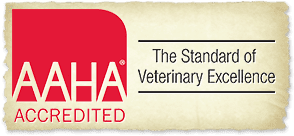Obesity is one of the most common and dangerous—yet preventable—diseases to affect dogs and cats today. Do you think your pet might be part of the statistics? Learn how to make sure with these guidelines from a Jensen Beach vet.
Feel the Ribs
Kneel down beside your pet and put your hands on both of her sides. With a gentle press, you should be able to feel the rib bones gliding under a thin layer of fat. If you can’t find your pet’s ribs with a little pressure, there’s probably too much fat accumulated there.
Look from Above
Straddle your pet and look down on her from a top view, examining her profile. You should be able to see a slight inward curve behind the ribcage, blending in between the hind legs. Some people refer to this area as your pet’s “waist.” If you don’t see this inward curve, or if the area bulges outward instead, your pet is probably carrying too much weight!
Look from the Side
Get down and look at your pet from a side view. Look again near the back of your pet, behind the ribcage. Do you see a gentle curve upward into the back legs? That’s good! If you don’t see this, though, or if the area sags downward, your pet is likely obese. Cats, in particular, are known for accumulating excess body fat in this area.
Check the Tail
Another fat-accumulation hotspot is the base of the tail. Do you see extra fat rolls or what appears to be excess padding right where your pet’s tail starts? It may be a sign of obesity.
Have you checked out your pet and fear she may be carrying too much body fat? Make an appointment at your Jensen Beach vet’s office today. He or she can confirm the obesity diagnosis and get your pet started on a diet and exercise plan immediately.












Leave a Reply
You must be logged in to post a comment.